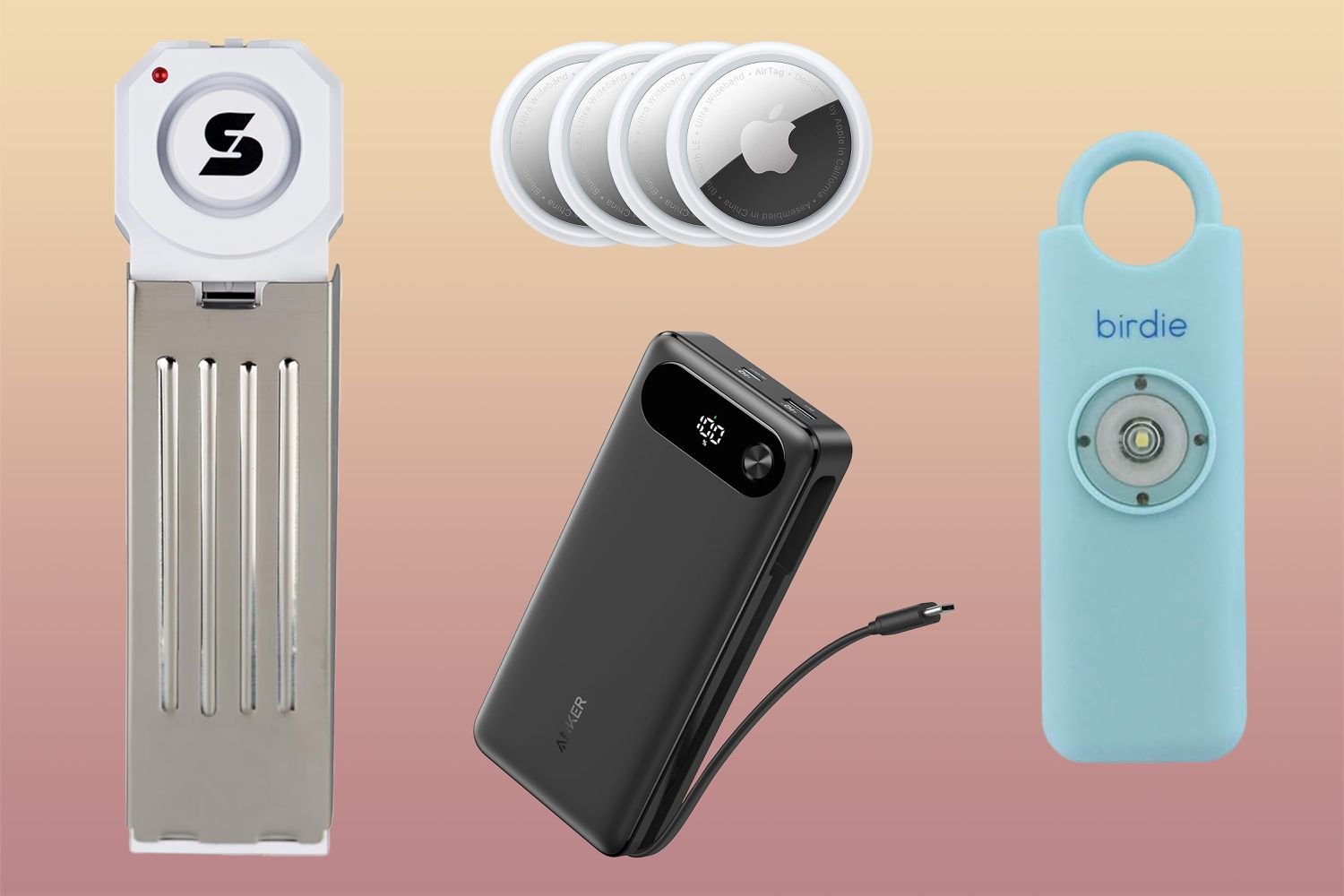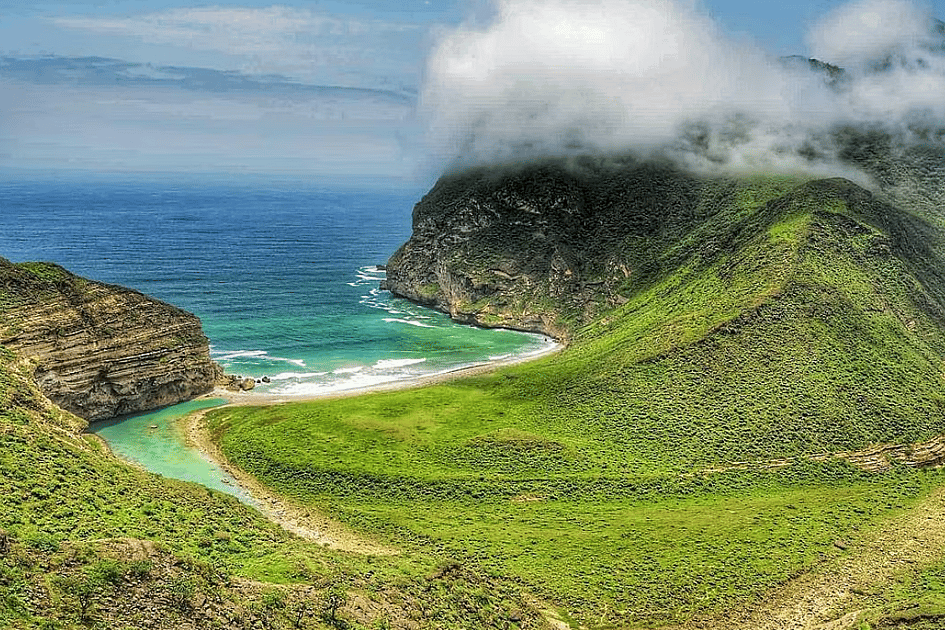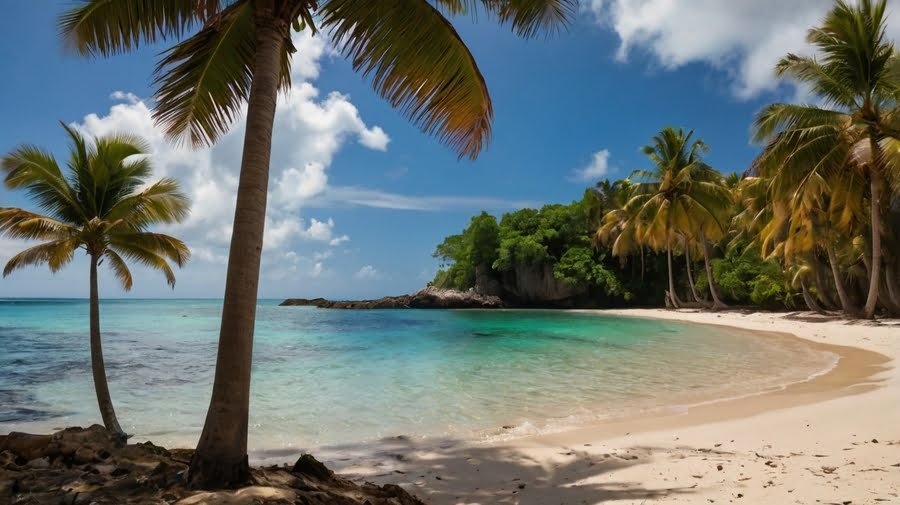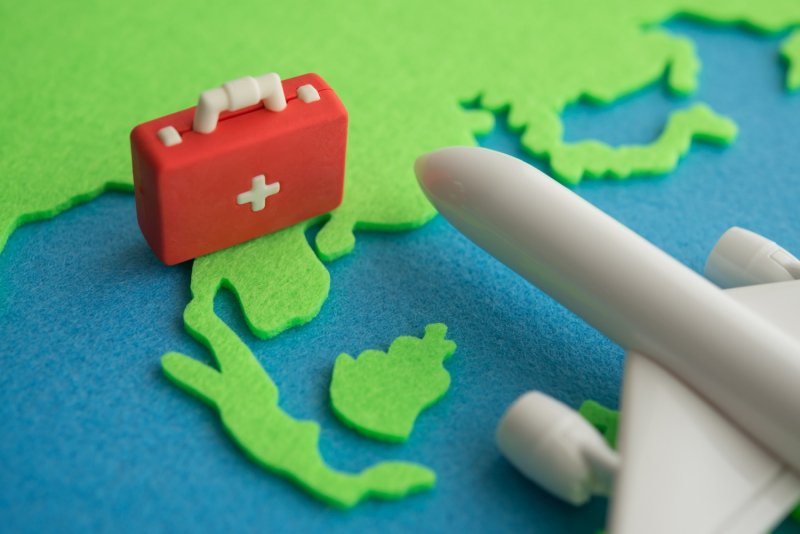Tips & Advices
8 Travel Safety Devices Recommended by an Expert

Staying safe while traveling isn’t just about tightly clutching your purse in a crowded subway. Meaningful travel security means being two steps ahead of potential hazards at all times to protect yourself and your belongings from a variety of risks — both physical and digital.
Take it from Jake Johnson, the co-founder of Batten Safe, a digital service that simplifies the process of finding security solutions. (Its team of experts includes home and cybersecurity pros and a retired Navy SEAL Command Master Chief). According to Johnson, who travels about 100,000 miles each year, there are three main categories to consider: general safety (such as theft, scams, and break-ins at home while you’re away), digital security (like stolen data or hacked devices), and personal health (including travel-related medical concerns like deep vein thrombosis, also known as DVT, or local water quality issues).
“These three risk categories are present from the time you leave your home through the end of your travels, regardless of whether you are traveling for an extended period abroad or on an overnight business trip,” Johnson explains.
Yes, it’s a lot to keep in mind. But while this array of risks may sound intimidating, the good news is that there are plenty of affordable, compact, and easy-to-use safety devices and tools that can help keep you safe. Here are Johnson’s top recommendations for staying secure on the road — all available now from Amazon, starting at $13.
Sabre Wedge Door Stop Security Alarm
Amazon
Johnson recommends traveling with this door stop, which triggers a super-loud, 120-decibel alarm should any would-be intruders try to enter your hotel, hostel, Airbnb, cruise ship cabin — or wherever else you find yourself during your travels. The door stop also prevents the door from opening any further, so you’ll be safe inside while getting help. And, to reduce the chances of being targeted for a robbery to begin with, Johnson recommends avoiding showing off any flashy valuables while traveling.
Sure Lock TSA Luggage Lock
Amazon
“In-flight theft has happened for some time outside of the United States, but it is a growing domestic concern, too,” Johnson says. “It’s a crime of opportunity further made possible by the victim’s lack of situational awareness.”
To prevent it, travelers should always keep valuables, cash, and passports in a bag below their seat. If this is not possible, travel with a small personal bag that can always be on your body. And, always use luggage locks like this TSA-approved version on your bags as a deterrent. “Luggage locks won’t eliminate risk altogether, but they prevent a crime of opportunity,” Johnson says.
Apple AirTag (Pack of 4)
Amazon
Johnson recommends using luggage trackers for all of your bags, so you know where they are at all times — especially to know if it made (or missed) that tight connection. “I keep one of these small Apple AirTags in every bag,” he says. The AirTag interfaces seamlessly with the Find My app on Apple devices and provides the location data to help reunite you with your gear. (Don’t forget to make sure your Find My device feature is enabled on phones and tablets, too, he adds.) There are other trackers non-Apple users can take advantage of, such as the Tile tracker or the Samsung Galaxy SmartTag2.
Physix Gear Compression Socks
Amazon
On any flight longer than two hours, Johnson recommends wearing compression socks, which aid in circulation and reduce the risk of DVT. “I also make a point to walk around a plane or train on longer trips whenever possible to keep the blood flowing,” he says. After all, arriving at your destination feeling your best will help you stay more alert and ultimately feel safer during your trip.
Anker Power Bank
Amazon
Having a backup power supply on hand will help maintain your general safety and security while traveling so you can keep your phone and other key devices charged. Johnson recommends this popular Anker power bank, which can charge up to three devices simultaneously. (And while you should always keep your phone charged, be sure to keep your wits about you, too: “Pay attention — and don’t walk around looking at your phone,” he says. “And never leave devices unattended.”)
She’s Birdie Personal Safety Alarm
Amazon
Johnson recommends a personal safety alarm to all solo travelers, especially this She’s Birdie one. It emits a deafening alarm and strobe light meant to deter any potential attacks, and it’s activated in seconds by removing the top pin. The device fits right on your keychain with the included carabiner and comes in 11 colors to match your travel style.
NordVPN and Cybersecurity Software
Amazon
Travelers face serious risks when connecting to a new Wi-Fi network on the road. “Unsecured networks without encryption are the equivalent of leaving your wallet open on the side of the road,” Johnson says. Instead, he recommends travelers use a VPN whenever connecting to Wi-Fi outside of their home network. This downloadable NordVPN software is his “front line of defense” for a secure Wi-Fi connection, and it can be used for up to 10 devices — perfect for travelers with a tablet and laptop in addition to their phone.
Johnson also recommends enabling screen locks and device PINs and using strong passwords for additional layers of digital security. “[You should] avoid using public or hotel computers to access any sensitive accounts,” he adds. And, don’t pair your electronics to unknown devices while on the road.
LMNT Hydration, 30 Pack
Amazon
While jet lag isn’t usually a threat to personal safety, it’s certainly uncomfortable — and cognitive impairment can lead to poor judgment. You could get lost, misplace belongings, or even get in a traffic accident if behind the wheel. “Jet lag is tough to shake, but being properly hydrated is the best place to start,” Johnson says, as dehydration can often worsen symptoms. “Hydrate before and while flying.” These individually packed electrolyte powders can help, and they’re compact and easy to travel with.
Love a great deal? Sign up for our T+L Recommends newsletter and we’ll send you our favorite travel products each week.
Tips & Advices
Khareef season: Omani authorities issue safety tips for travelling to Dhofar after crash

In the midst of Salalah’s Khareef season, many UAE residents drive to Oman to experience the lush green landscape as the monsoon rain touches the land.
While the rains bring cooler temperatures and helps create unforgettable moments, it can also bring about safety hazards, particularly near water bodies. Stressing the need to exercise caution, Omani police shared safety tips for those travelling to Dhofar:
Stay up to date with the latest news. Follow KT on WhatsApp Channels.
-
Do not park your vehicle in unsafe places, such as near slopes. This puts your life and the lives of others at risk. Be responsible and stay away from dangerous locations.
-
Never leave children unattended near ponds and bodies of water, as even a moment of inattention can cost you
-
Keep the vehicles clean, and avoid dirty cars. Do not obscure the plate number, as owners can be held legally accountable for this
-
Passengers must not lean out of the window or roof of the car while driving recklessly; this can also expose you to legal accountability.
In a tragic accident in early July, a multi-vehicle collision in Dhofar killed 5 people, including two Omanis and three Emiratis who were from the same family. The crash injured eleven others, including two Omanis and nine Emirati citizens of which five are children.
The Emirati family members who died in the crash are a couple, and the wife’s mother. The couple’s eight-month-old daughter was hospitalised in Oman.
The family had travelled to Salalah for a summer break, but the tragic accident occurred just 12 hours after they left the UAE.
After the collision, UAE travellers spoke to Khaleej Times, sharing precautions to take while planning the journey, such as ensuring the vehicle is in good condition.
They also shared safety advice for driving through the tricky terrain, such as checking fuel levels, and driving at a speed lower than the speed limit in some areas.
Tips & Advices
US Issues Urgent Level 2 Travel Advisory for Dominican Republic Highlighting Crime Risks and Essential Safety Tips for Travelers

Sunday, July 20, 2025
The U.S. Department of State has recently updated its travel advisory for the Dominican Republic, now categorized as a Level 2 destination, advising American travelers to “exercise increased caution” due to the persistent threat of crime. This update follows concerns about violent crime, including robbery, homicide, and sexual assault, in popular tourist areas. However, while some critics have dismissed the warnings, the Dominican Republic continues to attract millions of international visitors each year. Here’s an overview of what travelers should know about the advisory, safety tips, and why this Caribbean gem remains a top vacation destination.
U.S. Travel Advisory Update for the Dominican Republic
On June 12, 2025, the U.S. Department of State elevated its advisory for the Dominican Republic to Level 2, urging travelers to “exercise increased caution.” This warning highlights the risk of violent crime despite the heightened police presence in areas frequently visited by tourists. The advisory pointed out that both locals and tourists may be vulnerable to robbery, sexual assault, and homicide, with criminals often escaping prosecution. However, the Level 2 advisory is considered a moderate alert, advising travelers to be aware of increased risks, but not urging a halt to travel entirely.
Level 2 advisories are a common designation for many tourist destinations around the world, and the Dominican Republic shares this rating with other popular travel spots such as Panama, the Netherlands, and the Philippines.
The Canadian government has also issued a similar advisory, cautioning travelers to “exercise a high degree of caution” due to concerns about violent and petty crime, including fraud, poor road conditions, and issues with public transportation. Despite these risks, the country remains a top destination for North American tourists.
How to Stay Safe in the Dominican Republic
While the U.S. travel advisory highlights the risks present in the Dominican Republic, travelers can take several precautionary steps to ensure a safe and enjoyable trip. The U.S. Department of State has provided key safety recommendations, including:
- Stay Vigilant: Always be aware of your surroundings, especially in crowded or unfamiliar areas.
- Avoid Flashy Displays: Keep valuables like phones, jewelry, and expensive items out of sight.
- Travel in Groups: If possible, explore with others rather than traveling alone, especially in unfamiliar areas.
- Secure Your Belongings: Never leave your food, drinks, or personal items unattended, and always be cautious in public spaces.
- Use Trusted Transportation: Experts recommend using reputable taxi services or ride-sharing apps like Uber instead of unregistered motorcycle taxis (motoconchos).
For emergencies, the Dominican Republic provides reliable services including the 911 emergency response system and a tourist police force (POLITUR), ensuring that help is available when needed. Many resorts also offer private security personnel, and it is strongly advised to stay within the safety of the resort boundaries, particularly for first-time visitors.
Cultural Awareness and Preparation
To ensure smooth travel experiences, it is recommended that visitors familiarize themselves with the local culture, norms, and language. Knowing basic Spanish phrases and understanding the country’s political sensitivities—such as its complex relationship with neighboring Haiti—can enhance both safety and comfort during a stay. Additionally, being respectful of local customs and traditions can help avoid misunderstandings and ensure a more enriching trip.
Why the Dominican Republic Remains the Caribbean’s Top Destination
Despite the recent advisory update, the Dominican Republic continues to be the Caribbean’s most visited country. In 2024, the island saw 34.2 million international arrivals, marking a 6.1% increase from the previous year. American tourists represent a significant portion of this traffic, accounting for nearly half of the arrivals during the first half of 2024.
However, there has been a slight decline in North American visitors in 2025, with a 5.12% drop in American arrivals and a 4.43% decrease in Canadian travelers compared to the same period in 2024. The Ministry of Tourism attributes these declines to seasonal factors such as the leap year and changes in holiday scheduling. On a positive note, South American tourism has surged, with a 31.3% growth in arrivals from that region during the first quarter of 2025.
The Dominican Republic remains a beloved destination thanks to its white-sand beaches, vibrant culture, warm climate, and relatively low-cost travel options. The country’s straightforward entry requirements, including minimal visa processes for most travelers, also contribute to its popularity.
Conclusion
While the U.S. Level 2 advisory highlights valid safety concerns, the Dominican Republic continues to be a top choice for millions of travelers. With proper precautions, visitors can still experience the beauty and charm of this Caribbean paradise. The country’s world-class resorts and tourist destinations are well-equipped to ensure safety, making it a top contender for those seeking a tropical getaway.
Whether you’re attracted to the pristine beaches, the rich cultural heritage, or the affordable vacation options, the Dominican Republic remains a dream destination for travelers worldwide. By staying informed and following safety tips, tourists can continue to enjoy all the beauty the island has to offer while minimizing risks.
Tips & Advices
You really should get health insurance when travelling abroad – BusinessDesk | NZ
-

 Mergers & Acquisitions1 week ago
Mergers & Acquisitions1 week agoAmazon weighs further investment in Anthropic to deepen AI alliance
-

 Mergers & Acquisitions1 week ago
Mergers & Acquisitions1 week agoHow Elon Musk’s rogue Grok chatbot became a cautionary AI tale
-

 Brand Stories2 weeks ago
Brand Stories2 weeks agoVoice AI Startup ElevenLabs Plans to Add Hubs Around the World
-

 Mergers & Acquisitions1 week ago
Mergers & Acquisitions1 week agoUK crime agency arrests 4 people over cyber attacks on retailers
-

 Asia Travel Pulse2 weeks ago
Asia Travel Pulse2 weeks agoLooking For Adventure In Asia? Here Are 7 Epic Destinations You Need To Experience At Least Once – Zee News
-

 AI in Travel2 weeks ago
AI in Travel2 weeks ago‘Will AI take my job?’ A trip to a Beijing fortune-telling bar to see what lies ahead | China
-

 Mergers & Acquisitions1 week ago
Mergers & Acquisitions1 week agoEU pushes ahead with AI code of practice
-

 Mergers & Acquisitions2 weeks ago
Mergers & Acquisitions2 weeks agoChatGPT — the last of the great romantics
-

 The Travel Revolution of Our Era1 month ago
The Travel Revolution of Our Era1 month agoCheQin.ai Redefines Hotel Booking with Zero-Commission Model
-

 Mergers & Acquisitions1 week ago
Mergers & Acquisitions1 week agoHumans must remain at the heart of the AI story

